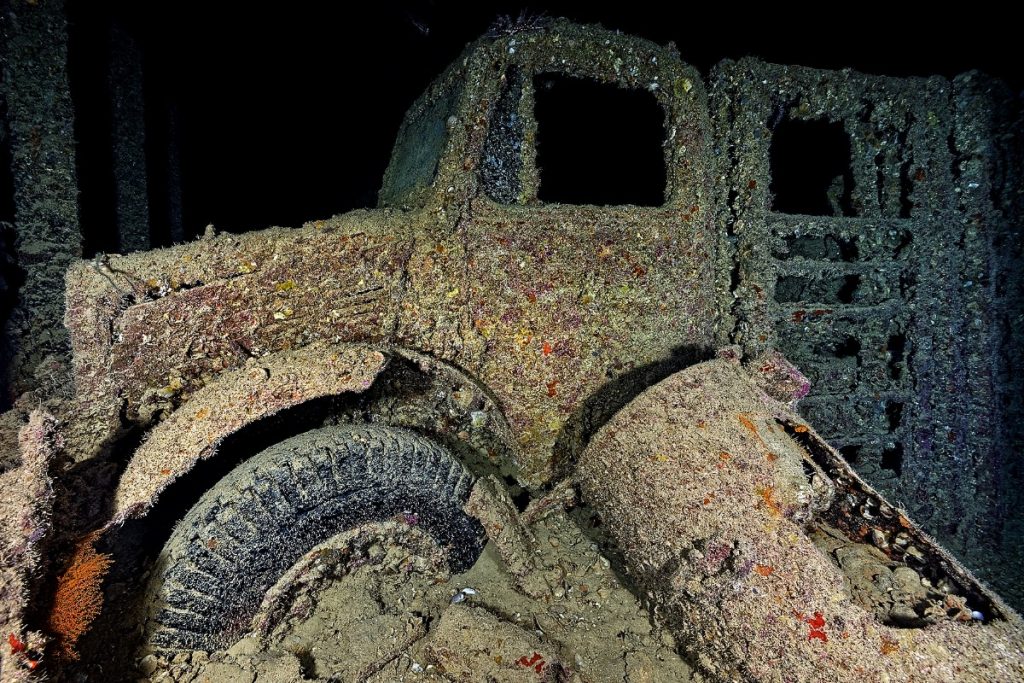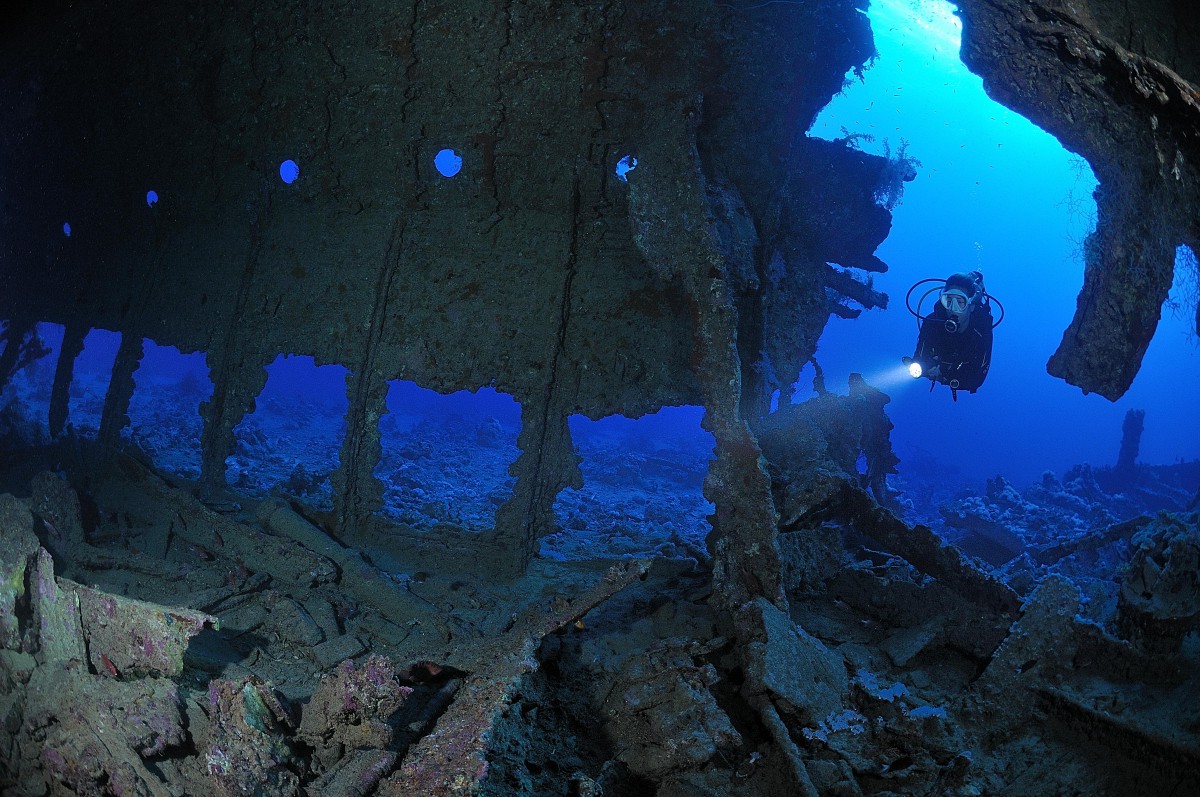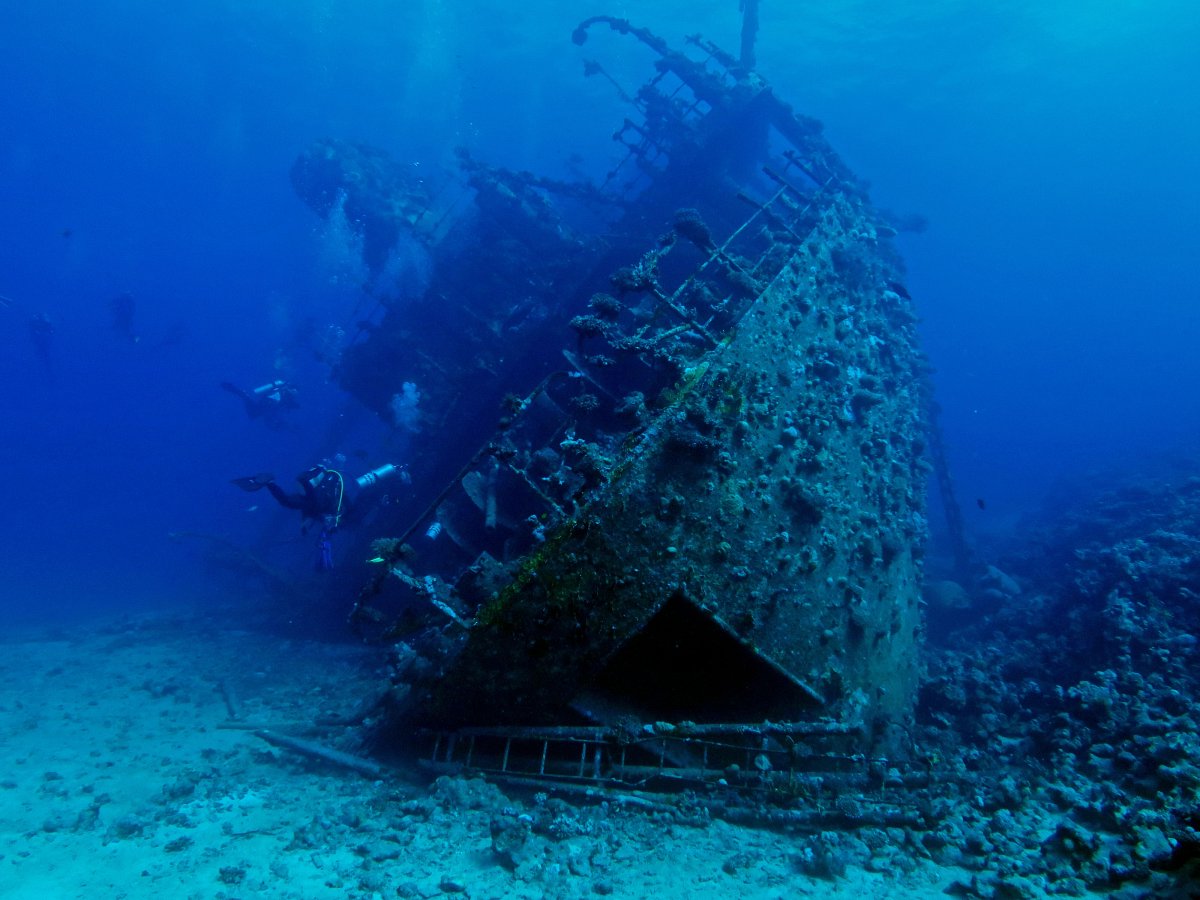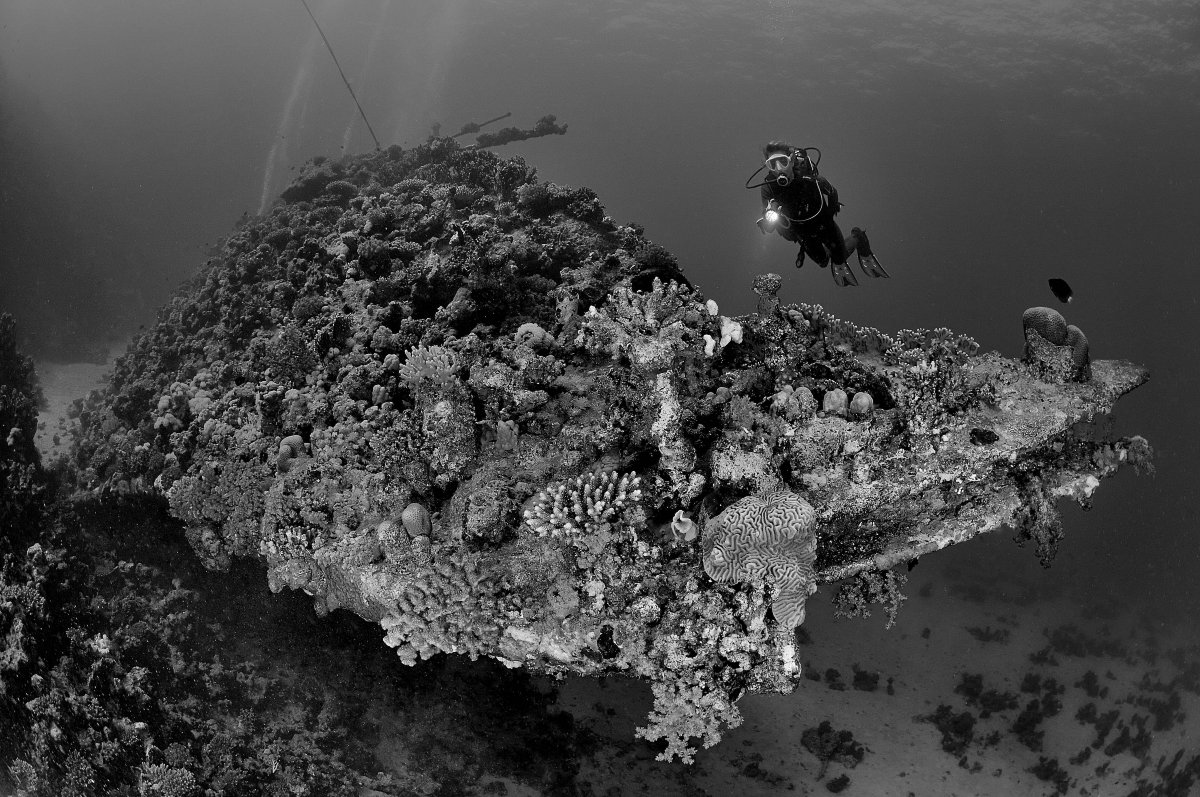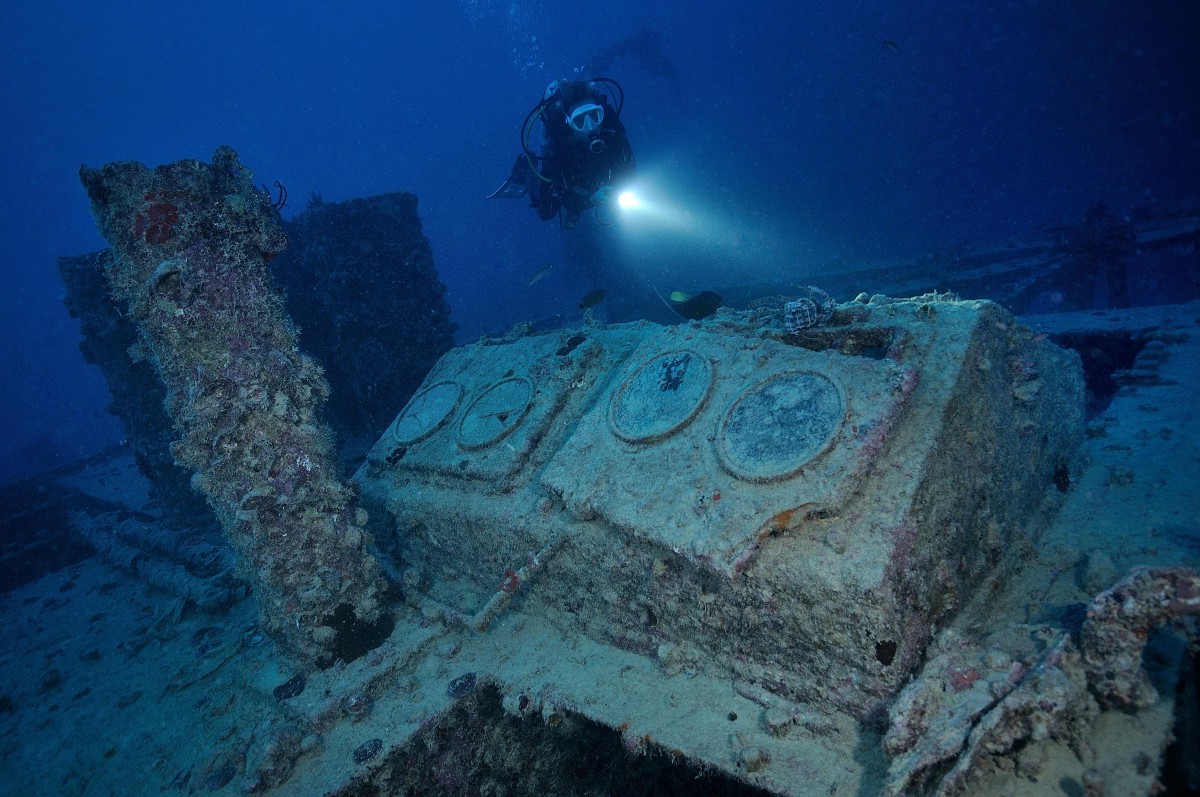The Red Sea is world-renowned as a paradise for divers.
It probably offers the most complete diving experience in the world with its incredible biodiversity, crystal-clear waters, accessibility for all ability levels, good year-round temperatures and some unique underwater geography.
And then, of course, there are the wrecks.
The Red Sea’s sunken pieces of history keep drawing visitors back. Each wreck tells a different story and give a glimpse into the past to those who explore them. These vessels have become artificial reefs, hosting a plethora of marine life, and this combination of history events and natural beauty is what provides the allure for so many divers.
Our itineraries Get Wrecked and Reefs & Wrecks offer the perfect way to get up close and personal with these icons of the Red Sea.
Here is a quick look at some of the more famous ones..
SS Thistlegorm
Perhaps the most famous of all the wrecks is the SS Thistlegorm – a British, armed Merchant Navy ship sunk in 1941 by German bombers. Resting at a depth of around 30 metres, the Thistlegorm is considered one of the best wreck dives in the world. Divers can explore cargo holds containing motorcycles, trucks, and armaments all frozen in time. Armoured cars, AA guns and locomotive carriages can be found on different points of the wreck, and a swim across the seabed rewards inquisitive divers with the locomotive engines that were thrown off by the blast. The marine life here is equally impressive, with schools of barracuda and batfish swirling around the wreck.
The Dunraven
Another gem is the Dunraven, a British steamship that met its fate in 1876.
Resting upside down, also at a depth of about 30 metres, its hull has transformed into a thriving reef. Soft corals, sponges, and an abundance of fish species adorn the wreckage, making it a vibrant underwater ecosystem. The interior of the wreck is accessible to divers, offering a surreal experience as they navigate through what was once a bustling steamship.
The Giannis D
The Giannis D, a cargo ship that sank in 1983, is another must-visit wreck. Split into three parts, it offers divers a multilevel dive experience. The ship’s stern rests at 24 metres, while its bow is at a shallower 10 metres.
Encrusted with hard and soft corals, the Giannis D is now a home to a variety of marine species including moray eels, lionfish, and glassfish. The accessibility of the ship’s interior, including the engine room and the cargo hold, makes for a fascinating exploration.
The Carnatic
The Carnatic, a steamship that sank in 1869, lies gracefully on the seabed at a depth of 27 metres. Its wooden structure has long since decayed, leaving behind a skeleton of coral-encrusted metal. This wreck is especially famous for its picturesque quality and the abundance of glassfish that fill its nooks and crannies. The Carnatic is a testament to the resilience of marine life, transforming a piece of history into a thriving underwater habitat.
The Barge
Diving into the Barge offers an intimate, underwater exploration experience. This smaller wreck, nestled in a shallow reef, is teeming with vibrant marine life. Divers can easily navigate through its accessible structure, making it ideal for beginners. The surrounding coral gardens are a visual feast, with an array of colourful fish providing a lively backdrop.
The Ulysses
The Ulysses, sunk in 1887, presents a dive into history. Resting in moderately deep waters, it requires more experience to explore. Its iron structure, covered in coral, has become a sanctuary for marine life. Divers can observe the ravages of time on the ship’s frame, while the surrounding waters are clear, offering good visibility to appreciate this historical artifact.
The Rosalie Moeller
The Rosalie Moeller is the sister ship of SS Thistlegorm and was sunk just two days after her ‘sibling’.
An adventure into a well-preserved piece of history, it lies at a depth that is challenging yet accessible for advanced divers. The ship’s large structure, still intact, hosts an abundance of marine life. The dive offers a mix of historical intrigue and natural beauty, with the eerie presence of the wreck contrasted by the lively marine ecosystem it supports.
The Kingston
Accessibility makes the Kingston, a Victorian-era ship, a special diving experience. Lying in relatively shallow waters, it’s approachable for divers of various skill levels. The ship is encrusted with vibrant corals and inhabited by a diverse array of reef fish. The clear waters of the Red Sea enhance visibility, allowing divers to fully appreciate the intricate details of the wreck and its thriving marine environment.
Wreck diving in the Red Sea is more than just an adventure; it’s an immersive experience into history, marine biology, and conservation. Each dive is a story, each wreck a chapter of a vast underwater saga.
But, while rewarding, it requires preparation and caution. It’s essential to have good buoyancy control and to be mindful of the fragile environment. Penetrating wrecks should normally only be attempted by advanced divers with specialised training.
It’s also important to respect these sites as historical artifacts, preserving them for future generations, and conservation efforts are crucial in protecting these wrecks and the marine life they support.

